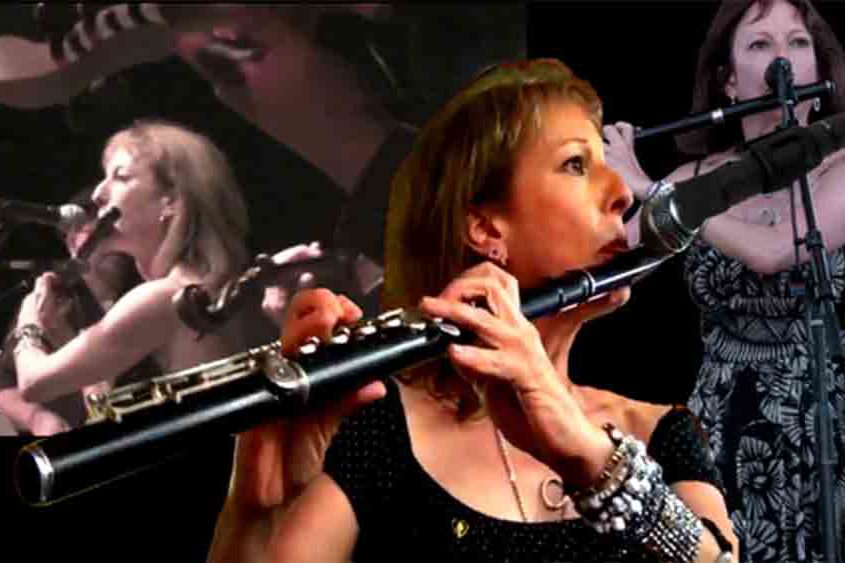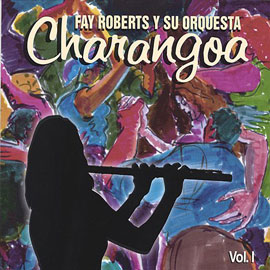FAY ROBERTS’ ADDICTION TO THAT INFECTIOUS SALSA RHYTHM
by Tessie Borden, July 12, 2010
THE AUTRY BLOG
Fay Roberts says she was on her way to becoming a conventional jazz/ pop flutist in the mid-1990s when she went to a salsa music festival in Griffith Park. She was hooked.
“I saw this flutist I’d met in New York, his name is Artie Webb, a wonderful flutist,” said the leader of Orquesta Charangoa, the featured act this Thursday at Sizzling Summer Nights at the Autry. “I just said, ‘That’s the most fun thing. That’s what I want to do.”
She found a teacher who gave her a to-do list.
“He told me listen to these flutists, and listen to these groups, and here’s some stuff to practice, and you’ve got to be completely fluent on your high notes,” Roberts said. “Then it just took off.”
Roberts joined her first salsa band as a tenor saxophone player, because she also knows that instrument. But she knew she wanted to play this music on her first love, the flute. She joined a three-piece ensemble that later expanded to a five-piece band. She also made plans to go to Cuba to study for two weeks with the legendary flutist, Richard Egües, known as “la flauta mágica” (the magic flute) and a specialist, with the Orquesta Aragón, in charanga, a kind of salsa that began in 1930s Cuba and prominently features the flute.
Just before she was to leave on her trip in January 1997, Roberts found out her band had gotten fired from an important gig. A bandmate saw an opportunity.
“One of the musicians said, ‘While you’re in Cuba, buy sheet music while you’re there. When you come back, we’ll start a charanga,’ ” she said. “That’s how I started it.”
When Roberts told Egües of her project, he enthusiastically signed on to coach her through it.
She returned with her charts and immediately began networking to find musicians who could work in this older, more traditional form of salsa music. And Egües became so involved in the project that when Roberts arrived in Cuba for a second three- week study trip the following December, she stayed at the Egües home, both to undertake a rigorous schedule of classes (including dance classes) and to be able to talk and plan with him the budding Orquesta Charangoa . Twelve years later, the band is going strong, with a recently released CD and an active schedule of appearances, including Sizzling Summer Nights.
For Roberts, the trips to Cuba were life- changing. Chatting with a friend who accompanied her, they agreed that experiencing music in Cuba was like watching the most fabulous dancer in the world perform in rags.
Curiously, even though the charanga tradition remains strong in Cuba many years after the Cuban Revolution, the music initially was considered aristocratic, because even though it incorporated African rhythms, it was played on European instruments and was well- suited to ballrooms. For Roberts, playing charanga taps into things that are both basic and complex: basic because the core combination of instruments used, a rhythm section and a flute, is to her “a very ancient combination”; and complex because each musician and instrument — the bass, the string section, the piano — has a distinct personality within the group, but the flute travels on top of it all, setting the melody.
Roberts has many favorite musical influences: José Fajardo, Nestor Torres, Don Gonzalo Fernandez. But she speaks most fondly about her teacher, Egües, who died in September, 2006. She talks about how she met with him when he traveled to San Francisco in 2000, attending his performances and even taking him to buy new glasses. She also repeats a well- known anecdote of how Egües, a pianist by training, discovered the flute.
“He said, ‘You play piano, you’re playing the whole night.’ You’re always playing and you can’t, like, flirt with the girls,” Roberts said “But look at the flutists. They have so much space in between, he said, ‘That’s what I want to do.’ ”
Roberts also loves the interaction with the audience, even if it’s of a, shall we say, slightly different nature.
“It’s music for dancers. You’re participating with dancers, interacting with them,” she said. “I can really connect with people and watch. We’re watching people the whole night.”



